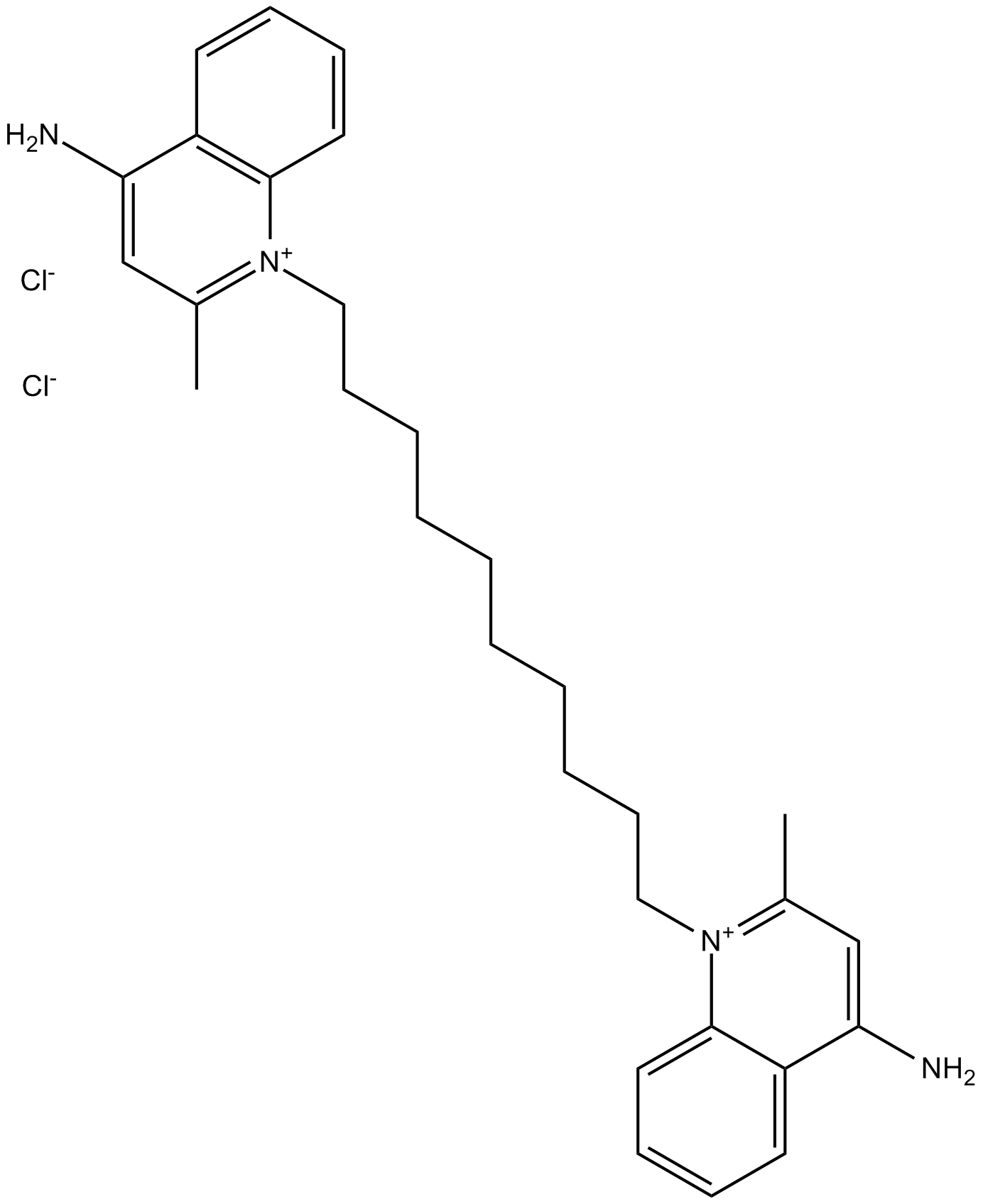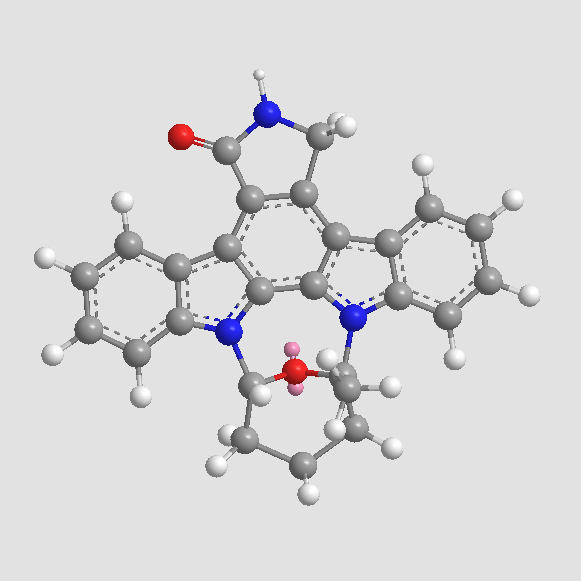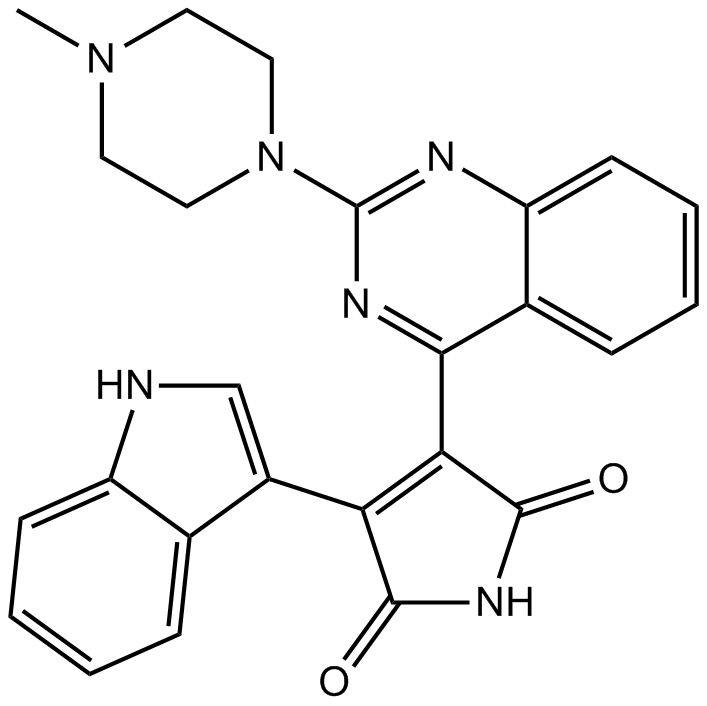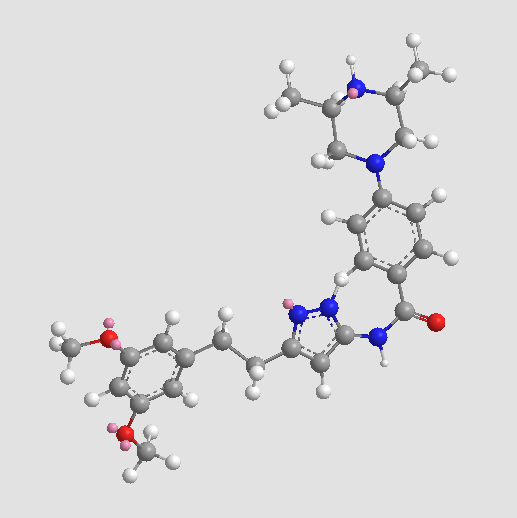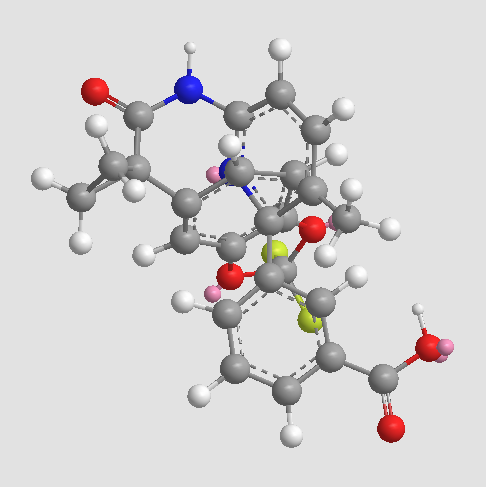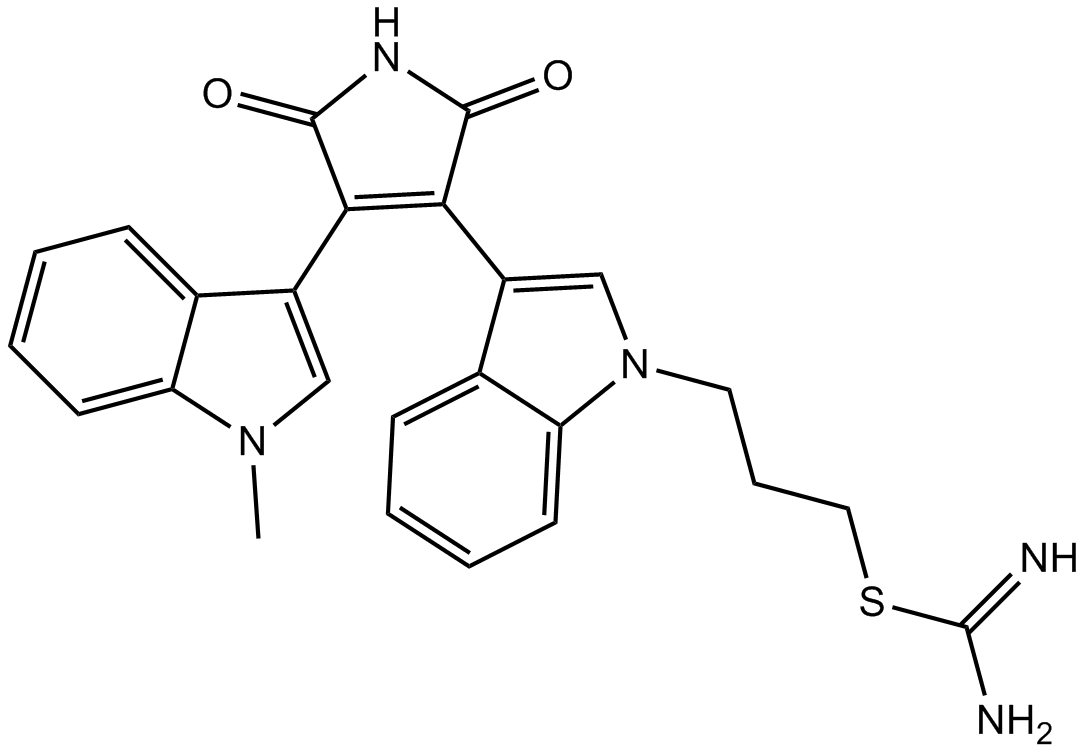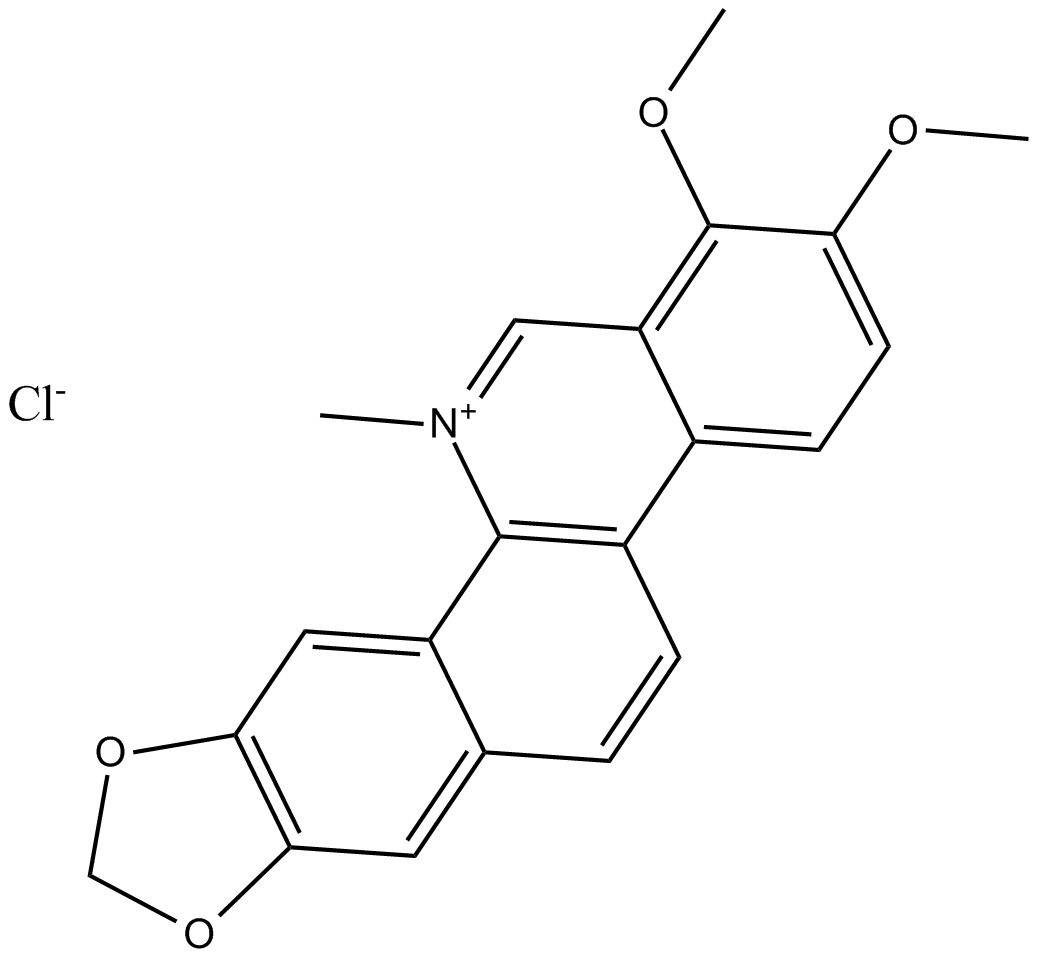Dequalinium Chloride
Dequalinium Chloride (DECA) is a PKC inhibitor with IC50 of 7-18 μM, and also a selective blocker of apamin-sensitive K+ channels with IC50 of 1.1 μM [1][3].
Protein kinase C (PKC) is a monomeric Ca2+- and phospholipid-dependent Ser/Thr protein kinases, it plays a critical role in growth factor-activated signaling and malignant transformation [1].
DECA is an anti-tumor agent and PKC inhibitor. It is selectively accumulated and retained within the mitochondria of carcinoma cells where it blocked mitochondrial enzymes which can then disrupt cellular energy production, eventually resulting in cell death [2]. Dequalinium is a potent inhibitor of apamin-sensitive K+ channels in hepatocytes and of nicotinic responses in skeletal muscle. Dequalinium blocked angiotensin II-evoked K+ loss with an IC50 value of 1.5 μM and also inhibited 125I - monoiodoapamin binding with Ki of 1.1 μM [3].
DECA, as a mitochondrial poison, is an agent with capable of potentiating the effects of tumor necrosis factor against ovarian cancer cell lines. DECA treatment can prolong animal survival in mice bearing the PA-1 intraperitoneal ovarian carcinoma xenograft. Single agent DECA increased animal survival by 37% whereas human TNF increased survival by 12% in those animals treated 3 days post tumor injection. DECA/TNF enhanced animal survival by 45% in treated animals [4].
References:
[1]. Rotenberg SA, Sun XG. Photoinduced inactivation of protein kinase C by dequalinium identifies the RACK-1-binding domain as a recognition site. J Biol Chem, 1998, 273(4): 2390-2395.
[2]. Manetta A, Emma D, Gamboa G, et al. Failure to enhance the in vivo killing of human ovarian carcinoma by sequential treatment with dequalinium chloride and tumor necrosis factor. Gynecol Oncol, 1993, 50(1): 38-44.
[3]. Castle NA, Haylett DG, Morgan JM, et al. Dequalinium: a potent inhibitor of apamin-sensitive K+ channels in hepatocytes and of nicotinic responses in skeletal muscle. Eur J Pharmacol, 1993, 236(2): 201-207.
[4]. Manetta A, Emma D, Fuchtner C, et al. Effect of recombinant human tumor-necrosis-factor-alpha and dequalinium chloride on human ovarian-cancer cell-lines in-vitro. Int J Oncol, 1993, 3(1): 127-33.
| Storage | Store at -20°C |
| M.Wt | 527.57 |
| Cas No. | 522-51-0 |
| Formula | C30H40N4·2Cl |
| Solubility | insoluble in H2O; insoluble in ETOH; insoluble in DMSO |
| Chemical Name | 1-[10-(4-amino-2-methylquinolin-1-ium-1-yl)decyl]-2-methylquinolin-1-ium-4-amine;dichloride |
| SDF | Download SDF |
| Canonical SMILES | CC1=[N+](C2=CC=CC=C2C(=C1)N)CCCCCCCCCC[N+]3=C(C=C(C4=CC=CC=C43)N)C.[Cl-].[Cl-] |
| Shipping Condition | Small Molecules with Blue Ice, Modified Nucleotides with Dry Ice. |
| General tips | We do not recommend long-term storage for the solution, please use it up soon. |
Quality Control & MSDS
- View current batch:
Chemical structure
